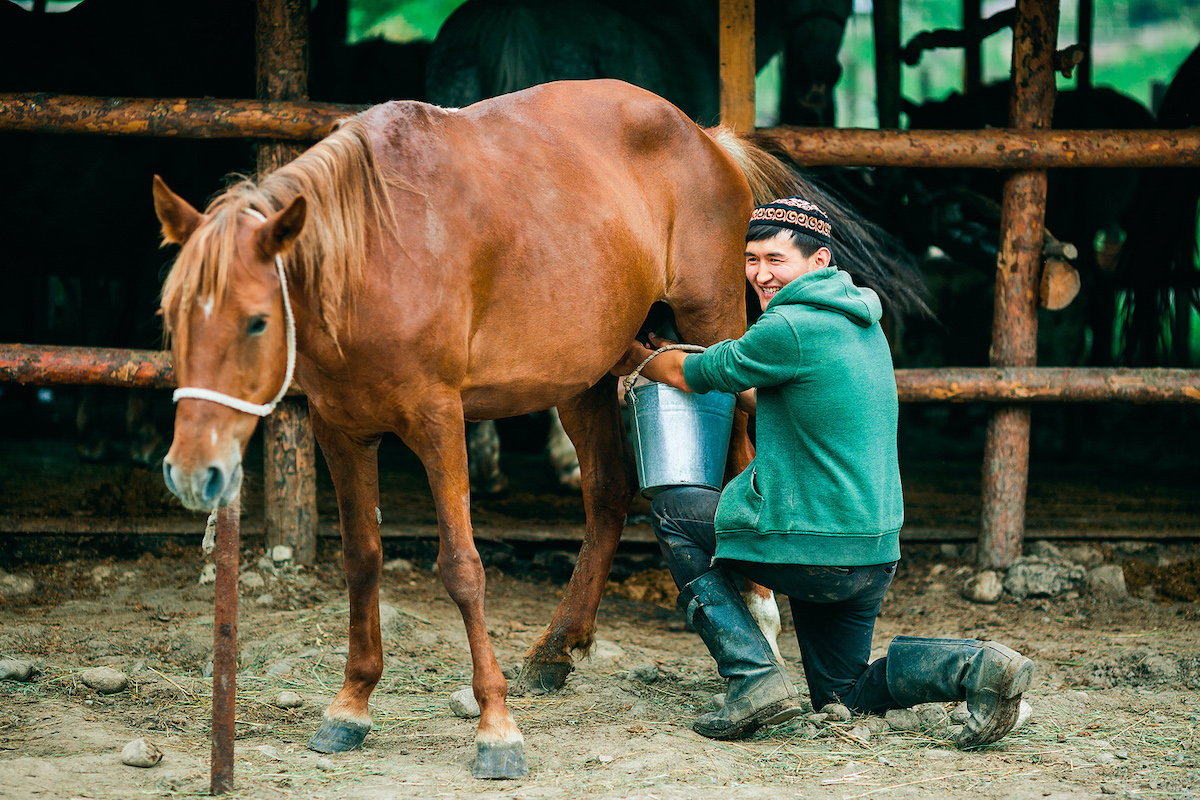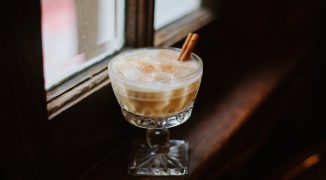Kazakhstan: a land most of the Western World only knows about thanks to Sacha-Baron Cohen’s man-kini wearing character Borat. We were there to buy fresh horse milk, fermented horse milk (known as “kumis”), and camels milk for the sake of cocktail “research” – especially since dairy products have been one of the key components of some of the most iconic cocktails in history, most notably the Ramos Gin Fizz and the Grasshopper. Before you instinctively jump to critique our experiment, we have to take a look back at history, culture & geo-location to understand the role these non-traditional milks have had in Kazakhstan for centuries.
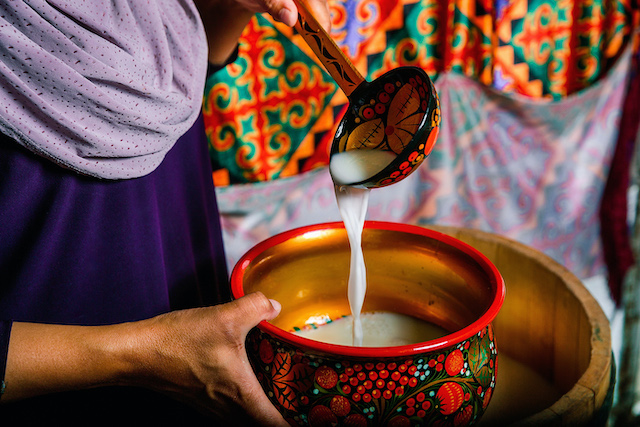
A Brief History
The first mention in literature of the consumption of horse milk – specifically of its fermented brother “Kumis” – can be traced back to the writings of Herodotus of Greece (circa. 463 BC) during his account of the contact between the Greeks & the Scythian horse raiders of the Eastern plains. Fast forward thousands of years, and archives show that, during the last breaths of the Russian Empire, there were many “Kumis Health Centres” located around the area that would become modern-day Kazakhstan advertising the substance’s ability to cure everything from leprosy and impotence to gout and sodomy. These centres were so popular that even well-known figures such as Tolstoy used to visit them with the hopes of being cured of their ills.
Nowadays, the consumption of horse milk is still popular in the countries of Kazakhstan, Kyrgyzstan & Mongolia, with low-scale commercial versions available on supermarket shelves and “artisanal/craft” versions being sold by elderly communist women from the side of the road in plastic unmarked bottles. It bears mentioning that the practice of using horse and camel milk in products follows the historical trend of “innovation through necessity,” and is attributed to the fact that most of the countries in this region are landlocked. You were forced to use what you had at hand in order to survive, and we’ve all heard about water being mildly deadly (at best) back in the day…
Production
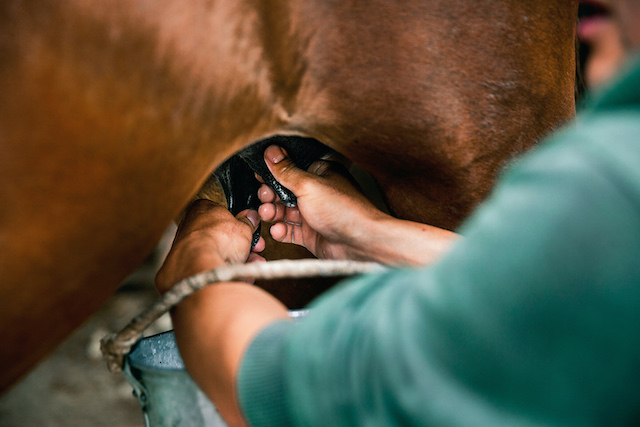
In order to ferment and produce Kumis, the mare needs to be milked – and this can be a bit of a nightmare in itself. The mare is usually milked 5-7 times per day in regular 2-hour intervals, each time producing roughly over a litre of milk. Unlike cows, mares will not give milk unless their young is present and suckling; this is one of the reasons why large-scale horse milk production is impossible.
Originally, the milk was fermented inside leather sacks, but now the “Solera” system, which uses wooden barrels with a small amount of the previous koomis batch still inside, is more favored. If a barrel is being used to ferment for the first time, the Kazakhs have been known to use hay, soured cows milk, or even innards to start the fermentation process. Once in the barrel, concoction is regularly mixed, which kickstarts process of lactic fermentation.
Kumis can be fermented for up to 3 days, and every extra day of fermentation changes the flavour composition, and can increase its alcoholic concentration by up to 3% alcohol by volume.
Consumption
Horse milk consumption doesn’t vary much from the consumption of cows’ milk in cultures from other countries. Of course, it’s not going to be found in cafes as an option for your flat white, but then again, Starbucks doesn’t have a presence in Kazakhstan either; the economic climate and slow hospitality progress doesn’t facilitate hipsters ordering Venti Horse milk Caramel Kazakh-chinos just yet.
It’s important to note that, due to its chemical structure, horse milk is the closest animal milk to resemble that of a human’s. Because of this, and because of its lower concentration of lactose, horses’ milk is easier for humans to consume than cows’ milk.
Most horse milk fermented into Kumis is intended to be consumed within a week as a digestif after a meal; alternatively, it can be boiled, sun-dried, and rolled into little salty balls called “kurt” that serve as a sort of Kazakh bar-food.
While local cafes might not venture, past tradition there is always a brave bartender with too much time on their hands ready to stick the most daring of ingredients into a cocktail. In Kazakhstan, that local bartender is Dmitri Korolev of Barmaglot Bar in Almaty, the cultural capitol of Kazakhstan. Armed with an edgy haircut, tongs, and a trendy apron, he set out on a mission to combine traditional Kazakh ingredients with modern mixology.
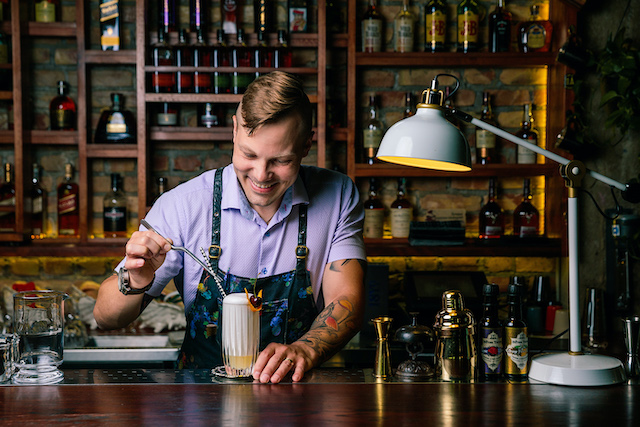
When discussing milk in cocktails, the first drink that naturally springs to mind is none other than the classic Ramos Gin Fizz. Our experiments led us to the conclusion that if you’re all about the head on a Ramos, then horse milk is your friend. The meringue-like froth is thick and super stable, with much more smaller bubbles then a regular Ramos. WIN!
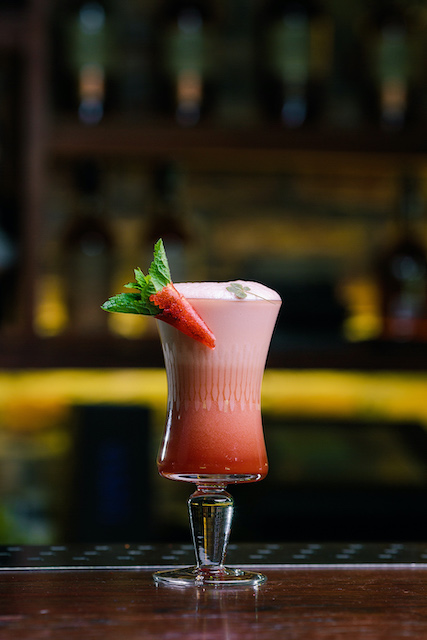
Our next experiment was a glorious bastardisation of the contemporary classic, the “Trinidad Sour” from Giuseppe Gonzalez in the form of the “Kazakh in Trinidad”. This drink incorporates all the ingredients from the original, then adds a new balance with lemon and Kumis. The lactic sour note adds a completely new level of depth to the drink, and smooths out the bitterness of the Angostura without drowning it out. Fabulous!
Final Summary
As the old saying goes, “Even though we CAN, I’m not sure we SHOULD.” Strictly from a cultural perspective, I don’t see horse milk products catching on any time soon outside their region of origin. Just trying to surpass the psychological barrier of drinking something from a horse that I milked 2 hours ago is hard to get over
Of course, there is a chance some corporate-backed Californian health guru could add this to his/her pseudo-diet, and we’ll see the explosion of new Horse products in the Western world. #HorseMilkTrend
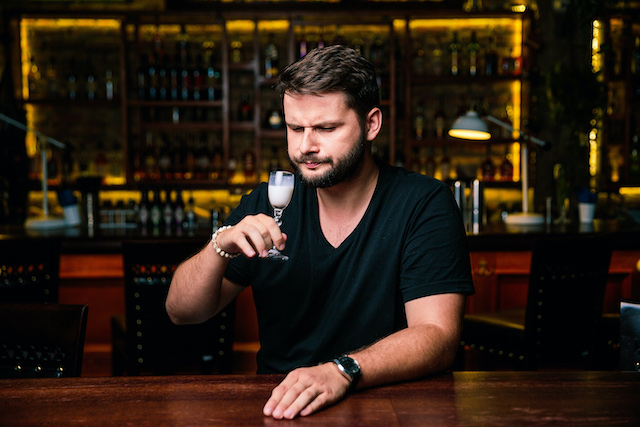
Photo credit: @ilya_aleshkovskiy


